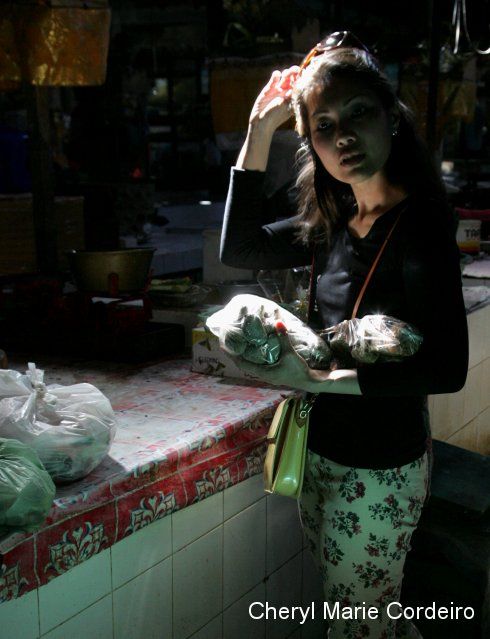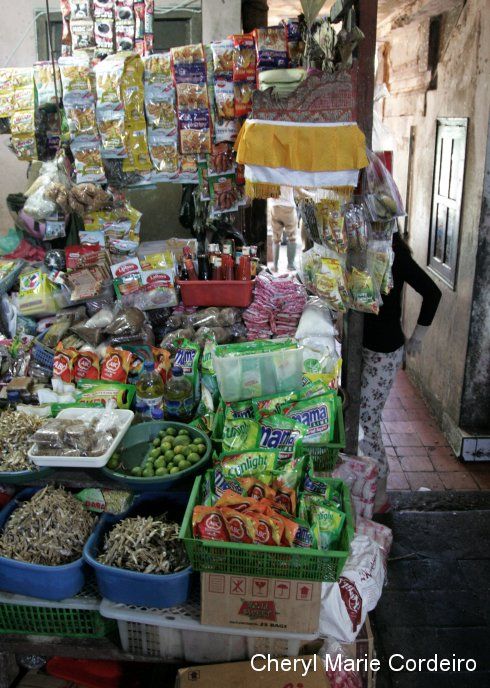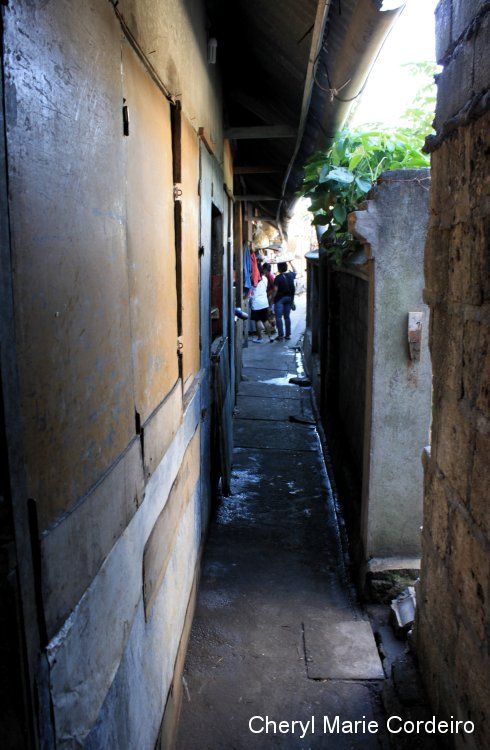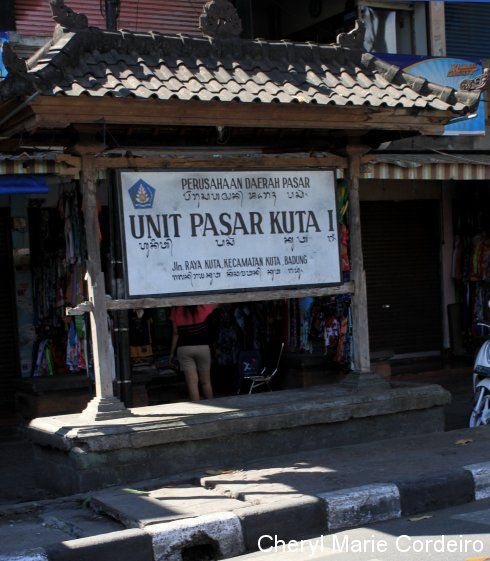
Late morning marketing at Kuta market, Bali.
Text and Photo © JE Nilsson and CM Cordeiro 2012
If you live in Southeast-Asia, a piece of information you neeed is the opening or business hours of the morning wet markets. Some beginning as early as 05:30 hrs in the morning, where by late morning at about 10:00 hrs, business is concluded, the stalls washed and goods neatly stashed for the next day’s trading.

In search of pulot hitam at Kuta market, near one of the almost invisible entrances.
Having had some requests for specific goods only to be found in Indonesia and likewise, Bali, I conveyed my brief shopping list to a local taxi driver, who was happy to be our guide to the island. He quickly settled where to go and so we were off towards one of his favourite markets – Kuta pasar – though I had gathered from what he told, I would need to improvise with my spattering of the Malay language since Balinesian and Indonesian languages differ, in order to do my shopping as no one in this market would speak English.

Cleaning up for the day at Kuta pasar.
True to marketing times, when we arrived in the late morning at Kuta pasar, the floors were being washed, and the white tiled counters cleaned. It took a brief moment to orientate ourselves, across language barriers, I managed to locate the stall that sold most items I had wanted to purchase, including pulot hitam, that is black glutinous rice that they call nasi hitam, and gula Bali, a variant of palm sugar produced right on the island.

This narrow corridor leads to houses behind the market. On the left and out of sight, food stalls that cater to the local area.
The ground floor to this market is compact, with stalls selling wet goods situated in the center of the square and shops selling dried goods and vegetables, lining the outer rim of the square.
Through one of the back lanes, a narrow path leads to the village houses where two or three stalls selling food can be found. We were invited to try their variety of food from nasi campur (rice with mixed food) that included ikan goreng (fried fish) to mee ayam (chicken noodles).

Kuta pasar, Badung. The sign to look for.
Compared to the enormous wet market at Denpasar well equipped with supply chain outlets running as arteries towards the main centre of activities, I think I’m most grateful to the taxi driver for introducing us to this little market square, as another peek into the lives of the locals of this island.